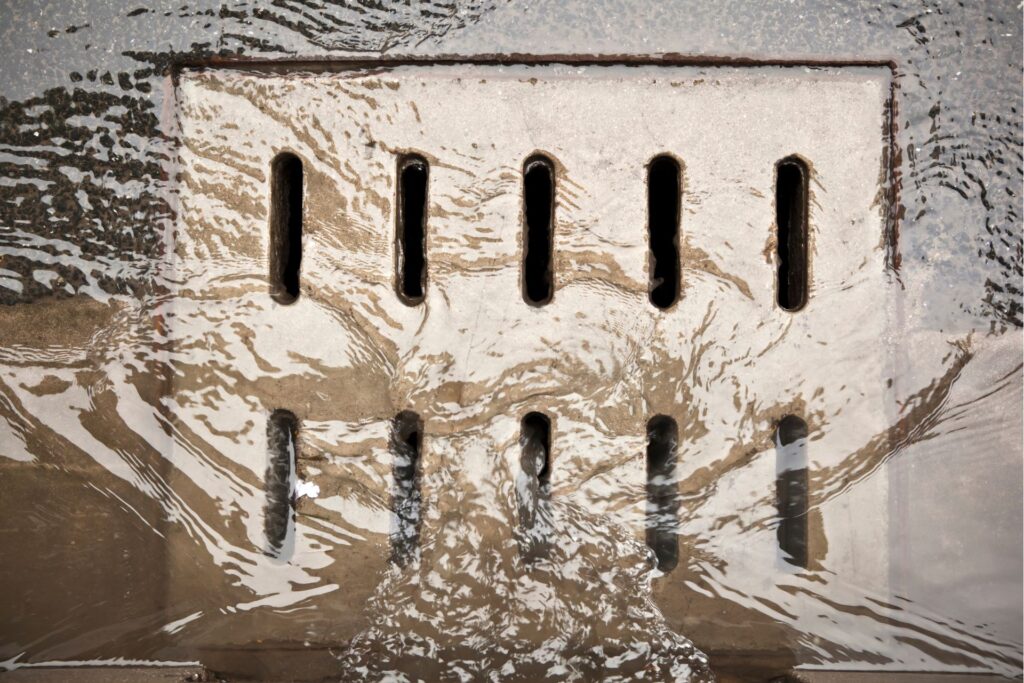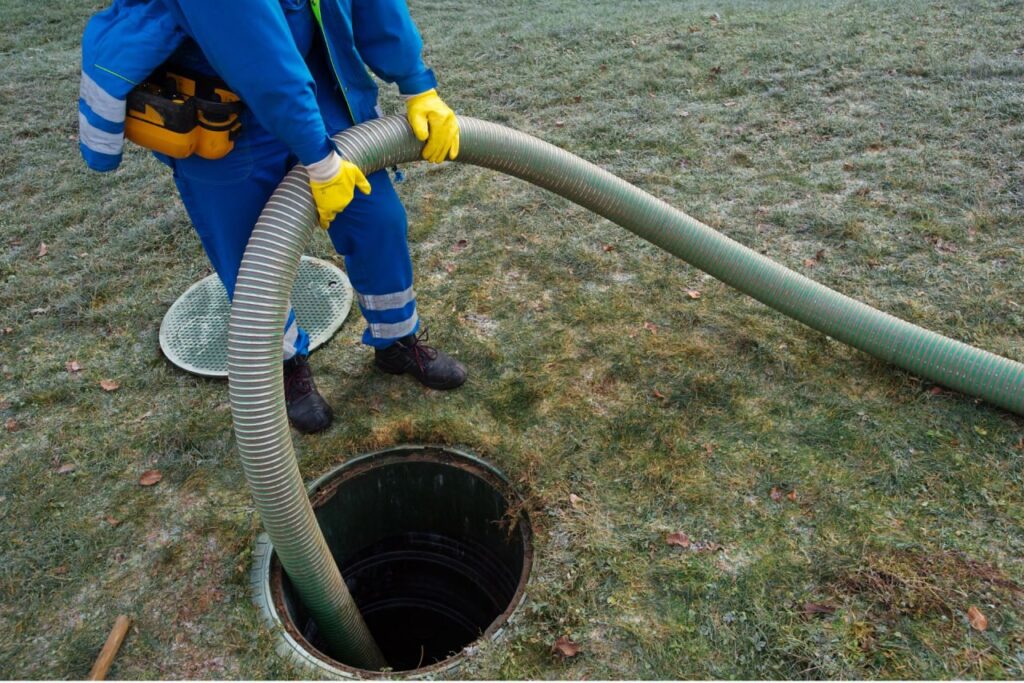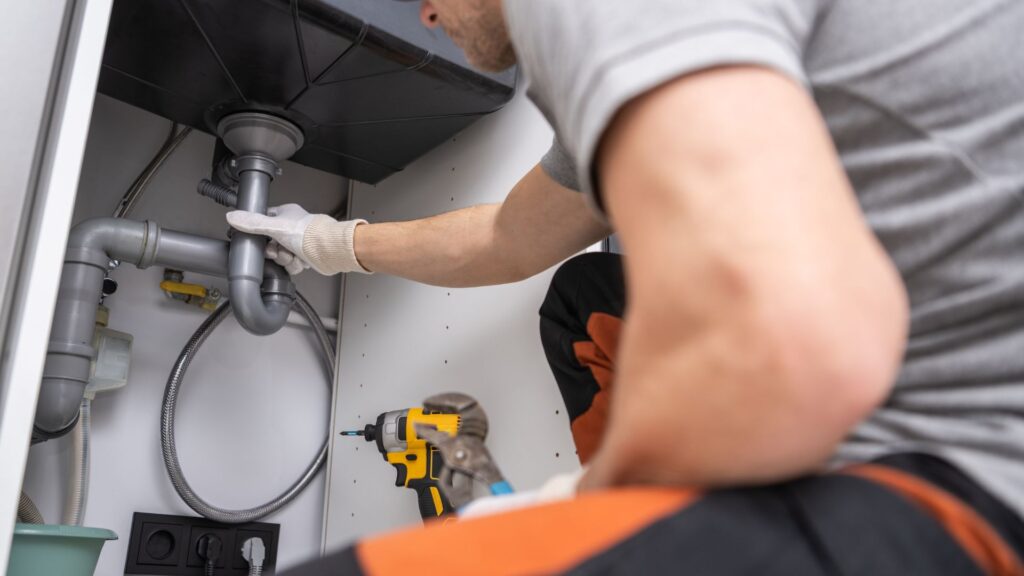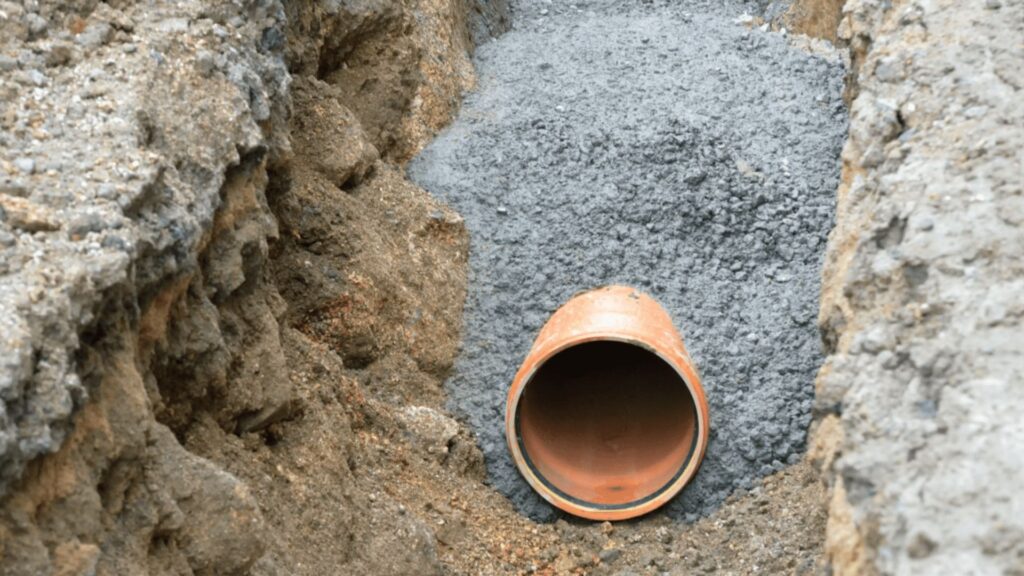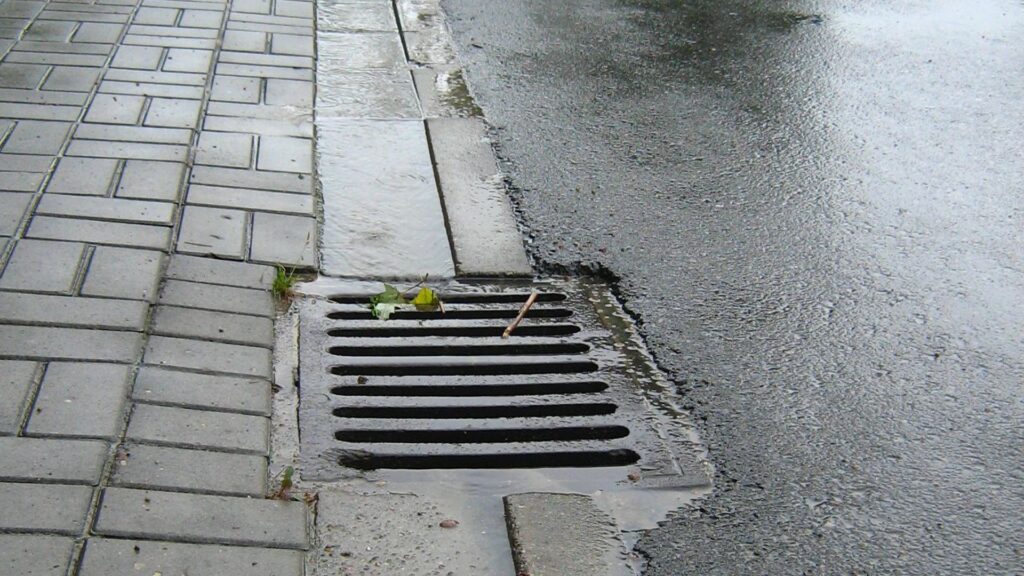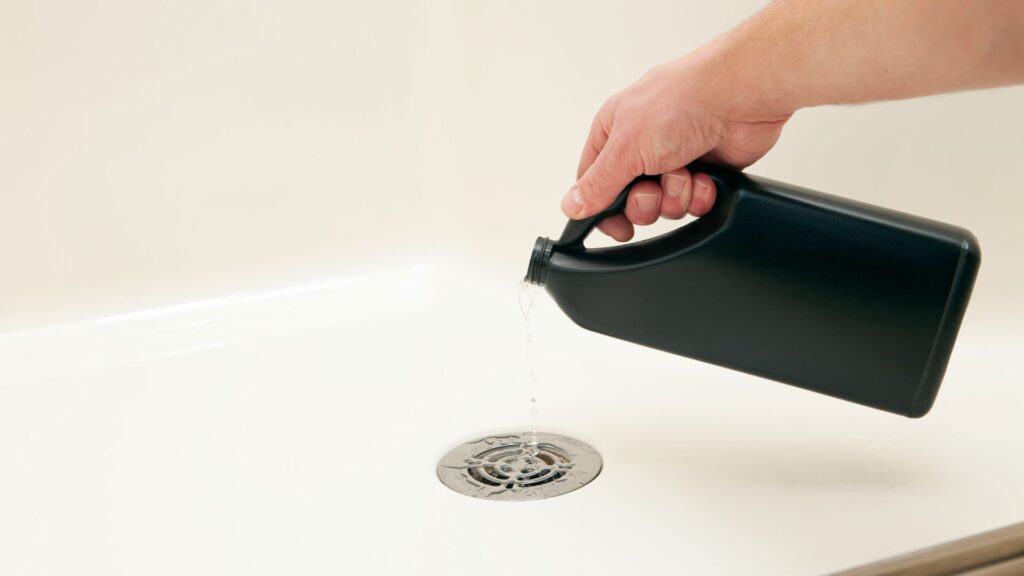Welcome to our guide on understanding the difference between sewage and sewerage in New Zealand. These two terms are often confused, but they refer to very different things that play essential roles in managing waste and water systems. Knowing the distinction between sewage, which is the waste itself, and sewerage, the infrastructure that transports and treats it, can help you better understand how these systems impact our environment, homes, and communities. In this post, we’ll dive into what makes them different, how they work together, and why it matters for you as a resident of New Zealand.
The difference between sewage and sewerage in New Zealand lies in their function: sewage refers to the waste material, including wastewater and solids, that flows from homes and businesses, while sewerage is the system of pipes, drains, and treatment facilities that transport and treat this waste. Sewage is the waste itself, and sewerage is the infrastructure that manages its safe disposal. Understanding these terms helps with addressing plumbing issues and maintaining public health.
- What Is Sewage?
- What Is Sewerage?
- The Key Differences Between Sewage And Sewerage
- How Sewage And Sewerage Systems Work Together In New Zealand
- Why The Distinction Matters
- Common Issues With Sewage And Sewerage Systems In NZ
- How You Can Help Maintain New Zealand’s Sewage And Sewerage Systems
- Innovations And Future Trends In NZ’s Sewerage Systems
- FAQs: About Difference Between Sewage Vs Sewerage NZ
- Conclusion
- Find A Professional Drainlaying Company Near You!
What Is Sewage?
Sewage is essentially the wastewater and waste materials that come from households and businesses, traveling through our drainage systems. This includes everything that we flush down our toilets, pour down our sinks, and drain from our showers. It’s a mix of both liquid and solid waste, which may not be the most pleasant thing to think about, but it’s an integral part of maintaining our daily lives.
At its core, sewage consists of human waste, greywater from kitchens and bathrooms, and even stormwater in some cases. Human waste is what we typically associate with sewage—solid and liquid waste that goes down the toilet. However, greywater is equally important to understand. This is the wastewater from our kitchens, showers, laundry, and dishwashers. It’s not contaminated with fecal matter but still contains soap, food particles, and chemicals that can affect the environment. In some instances, stormwater—rainfall that doesn’t get absorbed into the ground—can mix into sewage systems, especially in older drainage infrastructures, leading to overflow issues.
To give you an everyday example, think about what happens when you flush the toilet or wash your dishes. The water, along with whatever else is in the bowl or sink, flows down through the pipes. This mixture becomes part of the sewage system and heads off to be treated. It’s easy to take this process for granted since it’s all happening behind the scenes, but it’s critical to understand that sewage doesn’t just disappear once it’s flushed away. It travels through a network of pipes and eventually ends up at a treatment facility.
Why does proper sewage treatment matter? If sewage were left untreated, it would pose severe risks to both the environment and public health. Untreated sewage contains harmful bacteria, viruses, and chemicals that can contaminate water supplies, damage ecosystems, and cause diseases in humans and animals. New Zealand has strict regulations in place to ensure that sewage is treated properly before being released back into the environment, but any failure in this system can have devastating consequences.
By treating sewage effectively, we minimize its harmful effects, ensuring that our water remains clean and safe. This treatment process also protects our rivers, lakes, and oceans from pollution, helping maintain New Zealand’s pristine natural environment. Understanding what sewage is, and why its proper management is essential, allows us to appreciate the unseen work that keeps our communities safe and healthy.
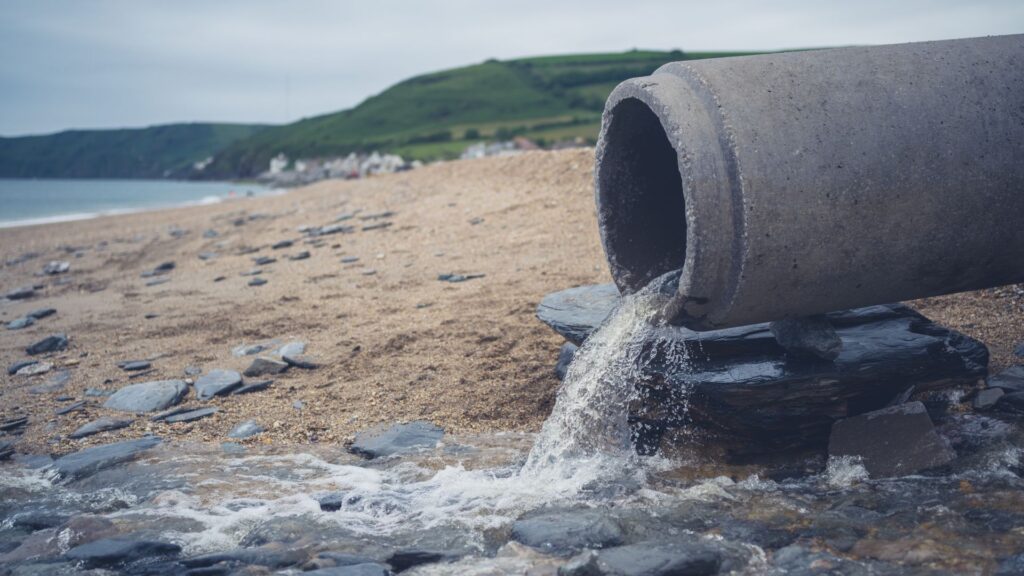
What Is Sewerage?
Sewerage refers to the entire infrastructure that manages the transport and treatment of sewage. In simple terms, sewerage is the complex system of pipes, pumps, and treatment plants that ensure waste water—also known as sewage—moves safely from homes and businesses to treatment facilities where it can be processed and made safe for the environment. Unlike sewage, which is the waste material itself, sewerage is the network that makes sure this waste is properly handled.
At the heart of every city or town is a sewerage system that operates silently behind the scenes, helping maintain public health and environmental safety. The network is extensive, including underground pipes and drainage systems that carry sewage from homes, factories, and businesses. The moment you flush your toilet or run your kitchen sink, the waste water travels through this system. Along the way, it may pass through various pumping stations, which are designed to keep the flow moving, especially in areas where gravity alone is not enough. Eventually, the waste ends up at a sewage treatment plant, where it undergoes a series of cleaning processes before being safely released back into the environment.
In New Zealand, sewerage systems are a critical part of the country’s infrastructure. Local councils are responsible for managing and maintaining these systems to ensure they remain functional and up-to-date. Each council ensures that the pipes and treatment plants are in good working order, which involves regular inspections, upgrades, and repairs. These systems are vital for keeping communities healthy and preventing environmental pollution. Whether you live in Auckland, Wellington, or a smaller town, your local council is tasked with overseeing the maintenance of these essential networks.
One interesting aspect of sewerage systems in New Zealand is their regional differences. Some areas rely heavily on gravity-fed systems, which use the natural landscape to help move sewage. In more mountainous or hilly regions, pumping stations are a necessity to ensure waste reaches treatment plants. Historically, the country’s larger cities were the first to develop comprehensive sewerage systems in the late 19th and early 20th centuries, a crucial development in reducing outbreaks of disease and ensuring clean waterways.
Sewerage is the unsung hero of modern sanitation, providing the infrastructure that keeps our communities clean, healthy, and environmentally safe. Without this complex system, waste would have nowhere to go, leading to widespread health risks and environmental hazards. So, next time you flush, it’s worth remembering the intricate network of pipes and pumps working behind the scenes to protect you and your environment.

The Key Differences Between Sewage And Sewerage
Understanding the distinction between sewage and sewerage is crucial when it comes to waste management systems, especially here in New Zealand. These terms are often used interchangeably, but they refer to two very different components of the waste disposal process. To help clarify, let’s dive into what each term means, why confusion happens, and how they function together.
Core Distinction
At its simplest, sewage refers to the waste itself—both liquid and solid—that comes from homes, businesses, and industries. This waste includes everything from toilet water to the soapy runoff from your kitchen sink. Sewage is made up of human waste, food scraps, oils, chemicals, and other contaminants. It flows through pipes from our homes and other buildings into a treatment facility where it’s cleaned before being released back into the environment. In short, sewage is the “stuff” that needs to be treated to ensure it doesn’t harm the environment or public health.
On the other hand, sewerage refers to the entire infrastructure that deals with the transportation and treatment of that sewage. This includes the network of pipes, pumping stations, and treatment plants that move sewage from where it’s produced to where it’s processed. Think of sewerage as the plumbing system on a much larger scale. It’s an invisible but vital part of everyday life that ensures waste is properly managed and doesn’t just end up contaminating our waterways.
Usage Confusion
So, why are these terms often mixed up? A lot of it has to do with how similar they sound—both words start with “sew” and relate to waste. However, they’re distinctly different in their roles. The confusion is understandable, especially since both sewage and sewerage are part of the same system, but the easiest way to remember the difference is that sewage is the waste, and sewerage is the system that deals with it.
In day-to-day conversation, it’s common for people to use “sewage” when they mean “sewerage,” simply because it’s the waste that tends to be more front-of-mind. We flush it away, it disappears from view, and we don’t think much about the complex network that makes that happen. However, when it comes to talking about infrastructure or technical issues (like a blocked sewer line), it’s important to use the correct term. Understanding this distinction helps when dealing with plumbers, contractors, or even local councils who manage New Zealand’s public water systems.
Visual Aid
To make this distinction clearer, a visual aid like an infographic or diagram can be extremely helpful. Picture this: on one side of the image, you have a representation of sewage—household waste flowing from a toilet, sink, and shower. On the other side, you have a depiction of the sewerage system—underground pipes, manholes, and treatment plants. An infographic that visually shows how sewage travels through the sewerage system would provide an easy-to-understand, at-a-glance explanation of their differences.
While sewage and sewerage may sound similar, they play very different roles in waste management. Sewage is the waste itself—what goes down the drain—while sewerage is the complex system that ensures it is transported and treated efficiently. Understanding this distinction is important, not just for clarity’s sake, but for appreciating the infrastructure that helps keep New Zealand’s environment clean and healthy. Next time you encounter a plumbing or drainage issue, you’ll know exactly which term to use and how these systems work together to handle waste safely.
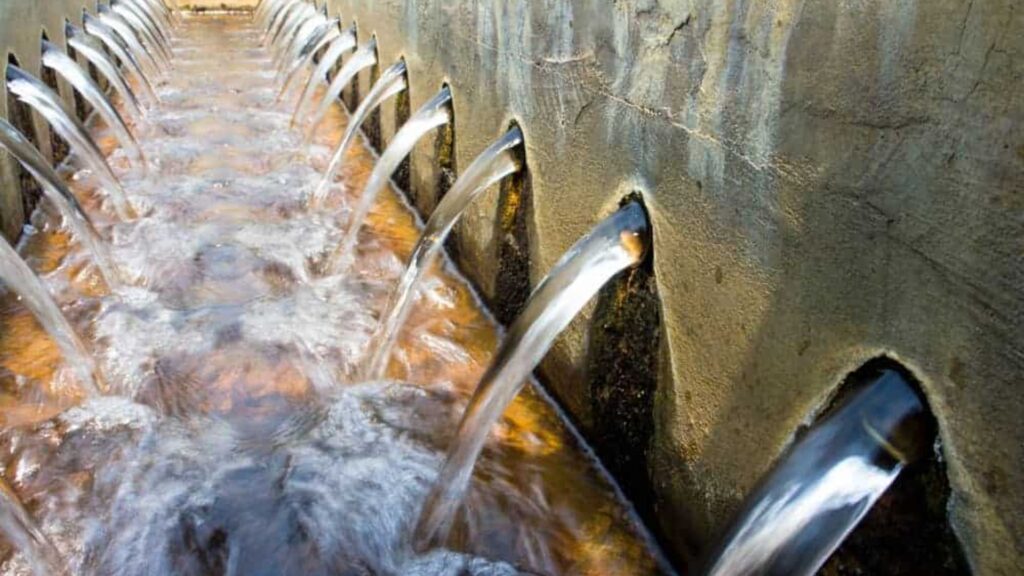
How Sewage And Sewerage Systems Work Together In New Zealand
When it comes to managing waste in New Zealand, understanding how sewage and sewerage systems work hand in hand is crucial. These systems play an essential role in maintaining public health, protecting the environment, and ensuring that waste is handled in a safe and efficient manner. Let’s take a closer look at how sewage moves from our homes to treatment facilities, what happens during the treatment process, and how New Zealand is working to safeguard its natural resources.
The Journey of Sewage
Every time you flush the toilet, wash dishes, or take a shower, wastewater (commonly referred to as sewage) begins its journey. In New Zealand, sewage from homes and businesses is carried away through a network of underground pipes that make up the sewerage system. This system consists of a series of drains, pipes, and pumping stations designed to collect sewage and transport it to a local treatment facility. The sewage flows through this network, often aided by gravity, but in some cases, it needs to be pumped uphill by specialized pumping stations to reach its final destination: the sewage treatment plant.
The process is highly coordinated and carefully managed to ensure that sewage moves efficiently and doesn’t back up into homes or contaminate the environment. New Zealand’s sewerage systems are maintained by local councils, which are responsible for ensuring that these networks remain in good working condition to handle the demands of growing populations and changing urban landscapes.
Treatment Process
Once sewage reaches a treatment facility, it goes through several stages of processing to remove contaminants and make it safe for release back into the environment. In New Zealand, sewage treatment typically involves three main stages: primary, secondary, and tertiary treatment.
- Primary Treatment: In this initial phase, the solid materials in sewage are separated from the liquid. Large particles like sand, grit, and human waste settle at the bottom of large settling tanks, while oils and grease rise to the surface. These solids are then removed for further treatment or disposal, while the liquid portion of the sewage moves to the next stage.
- Secondary Treatment: During this phase, the remaining liquid is treated biologically. Microorganisms are introduced to break down organic matter, including dissolved human waste and other biodegradable materials. This process helps reduce the concentration of harmful bacteria and pollutants in the water.
- Tertiary Treatment: The final stage focuses on polishing the treated water to ensure it meets environmental standards before being discharged into rivers, lakes, or the ocean. This may involve filtration, disinfection (often with chlorine or UV light), and the removal of any remaining nutrients like nitrogen and phosphorus, which can harm aquatic ecosystems.
By the time the sewage has passed through these three stages, it is no longer a threat to the environment or human health. In some cases, treated water is even reused for agricultural or industrial purposes, contributing to New Zealand’s efforts to conserve water.
Environmental Considerations
New Zealand takes great care in managing its sewage and sewerage systems to minimize environmental impact. With a reputation for pristine landscapes and clean waterways, the country places a strong emphasis on sustainable waste management practices. Efforts are constantly being made to improve the efficiency of sewage treatment processes, reduce pollution, and ensure that waste doesn’t harm local ecosystems.
One of the biggest challenges is protecting New Zealand’s freshwater resources, which are highly valued for their biodiversity and importance to indigenous Māori communities. Many councils are investing in modern sewage treatment technologies that help reduce the amount of untreated wastewater entering rivers, streams, and coastal waters. Additionally, there are initiatives to upgrade older infrastructure, making sewerage systems more resilient to extreme weather events and rising populations.
In recent years, New Zealand has also focused on reducing the release of harmful nutrients from treated sewage, which can contribute to algal blooms and the degradation of marine habitats. These environmental considerations are crucial for maintaining the country’s unique ecosystems and ensuring that sewage management practices align with the goals of sustainability and environmental protection.
By working together, sewage and sewerage systems in New Zealand not only manage waste efficiently but also contribute to the protection of the country’s natural beauty and the well-being of its people.

Why The Distinction Matters
When it comes to understanding the difference between sewage and sewerage, you might wonder why it’s so important. After all, they sound similar and seem related to the same basic idea: waste. However, distinguishing between these two terms can make a world of difference when it comes to managing household plumbing issues, understanding council communications, and navigating environmental reports.
Everyday Impact
Let’s start with your everyday life. Imagine you’re dealing with a blocked drain at home. If you don’t understand the distinction between sewage and sewerage, it might be harder to figure out what’s actually happening or how to explain the problem to a plumber. Sewage refers to the actual waste material—human waste, wastewater from your shower or sink, and sometimes stormwater that ends up in the system. Sewerage, on the other hand, is the infrastructure responsible for transporting that sewage, like the pipes, drains, and treatment facilities.
By knowing the difference, you’ll be better equipped to understand where the problem lies. If your toilet won’t flush or there’s a foul odor coming from the drain, you’re likely facing a sewage problem. However, if there’s an issue with a blocked or damaged pipe, that’s a sewerage issue. This knowledge not only helps you better explain the problem to professionals but also helps you interpret council notices and repair bills more accurately. For example, a notice about “sewerage maintenance” from your local council will let you know that the issue is related to the pipework or system infrastructure, not the waste itself.
Legal and Environmental Implications
The distinction between sewage and sewerage is also critical when it comes to legal and environmental matters in New Zealand. Local councils have a responsibility to maintain public sewerage systems and ensure that sewage is properly treated to protect public health and the environment. When councils refer to “sewerage systems,” they’re talking about the network of pipes, pumping stations, and treatment plants that manage the transportation and treatment of sewage. Understanding this helps you comprehend council communications about infrastructure upgrades, water treatment efforts, and even rates adjustments.
From an environmental perspective, untreated sewage can have devastating effects on local ecosystems, contaminating waterways and endangering wildlife. Sewerage systems play a crucial role in preventing these risks by efficiently moving sewage to treatment facilities where it’s processed and cleaned. In legal terms, regulations regarding sewage and sewerage are designed to keep the public safe. Councils need to make sure that sewerage systems are functioning well so that sewage doesn’t back up into homes or leak into the environment, which can result in health hazards or environmental fines.
Practical Example
To make this clearer, let’s consider a real-life situation. Imagine you flush your toilet, and instead of everything going down as usual, the water starts rising, threatening to overflow. Naturally, you might assume this is a sewage issue, and you’d be right. However, if you notice that the problem extends beyond your house—perhaps you see your neighbors experiencing similar issues or water pooling outside—it’s likely a sewerage issue. In this case, there could be a blockage or failure in the sewerage system itself, such as a broken or clogged pipe. You’d need to contact your local council or a plumber to address the sewerage system problem, not just the sewage in your home.
This example highlights how understanding the distinction between sewage and sewerage helps you take the right action and communicate effectively with professionals. Whether you’re dealing with a household issue or interpreting a council notice, knowing the difference ensures you’re better informed and prepared.

Common Issues With Sewage And Sewerage Systems In NZ
Sewage and sewerage systems play a crucial role in maintaining public health and environmental protection in New Zealand. However, like any infrastructure, they can encounter problems. Understanding these common issues can help homeowners, businesses, and communities address them more effectively and work with local councils to maintain the efficiency of these systems.
Sewage Problems
One of the most frequent problems related to sewage is blockages. These blockages often occur when inappropriate items like wet wipes, sanitary products, or cooking fats are flushed down toilets or drains. While it may seem harmless at the time, these materials do not break down easily and can cause serious clogs in the pipes, leading to sewage backups in homes or businesses. Blocked pipes can create unpleasant odors, pose health risks, and in severe cases, result in raw sewage overflowing onto streets or properties.
Leaks are another common issue. Over time, pipes carrying sewage can deteriorate due to corrosion, ground movement, or even tree roots penetrating the pipework. When leaks occur, untreated sewage can seep into the surrounding soil or waterways, posing environmental hazards. This contamination can lead to polluted rivers, lakes, and even affect marine life, which is particularly concerning in a country like New Zealand, known for its pristine natural landscapes.
Sewage overflow, often linked to heavy rainfall or flooding, is another major problem. New Zealand’s sewer systems are sometimes combined with stormwater systems, meaning that during periods of heavy rain, the sewerage infrastructure can become overwhelmed. When this happens, untreated sewage may overflow into the streets or waterways, increasing the risk of waterborne diseases and environmental contamination.
Sewerage System Failures
Sewerage systems are the backbone of waste management, but they are not immune to failures. One of the most serious issues is pipe bursts. Sewerage pipes, especially older ones, are susceptible to bursting under pressure. This can occur due to blockages, excessive water flow, or the natural aging of infrastructure. When a sewerage pipe bursts, it can cause significant damage, including flooding and the release of untreated sewage into the environment.
Aging infrastructure is a major concern in New Zealand’s sewerage systems. Many areas are dealing with pipes and treatment facilities that were built decades ago and are nearing the end of their expected lifespan. As infrastructure ages, the risk of failures such as leaks, blockages, or complete system breakdowns increases. In some regions, councils are facing the challenge of upgrading or replacing large sections of the sewerage system, which requires significant investment and planning.
Another common failure in the sewerage system is pump station breakdowns. Sewerage systems often rely on pumping stations to move waste from lower areas to higher ones, particularly in hilly regions of New Zealand. If a pump station malfunctions, sewage can back up in the pipes, leading to overflows and backups. Regular maintenance is essential to prevent these breakdowns, but pump failures can still occur, especially during power outages or mechanical malfunctions.
Local Insight
New Zealand’s varied geography means that different regions face unique challenges when it comes to their sewerage systems. For example, Auckland has experienced several issues with sewage overflows due to its combined stormwater and sewage system. During periods of heavy rain, the city’s system often struggles to cope, leading to untreated sewage flowing into the Waitematā Harbour. This has raised environmental and public health concerns, prompting ongoing discussions about the need for infrastructure upgrades and better stormwater management.
In Wellington, the aging sewerage infrastructure has been a notable issue. There have been instances of significant pipe bursts, such as a high-profile incident in 2020 where a major sewerage pipe burst in the CBD, leading to sewage flooding streets and buildings. The event highlighted the city’s need to invest in upgrading its old pipes to prevent future incidents.
Smaller towns are not immune to these challenges either. For example, in some rural areas, the reliance on septic tanks can lead to sewage leaks and contamination if the systems are not properly maintained. Local councils in these regions are often tasked with managing both modern sewerage systems in towns and older septic systems in more remote areas, creating a complex set of issues to address.
While New Zealand’s sewage and sewerage systems are essential for public health and environmental safety, they are not without their challenges. Blockages, leaks, overflows, and aging infrastructure all pose risks that need to be managed proactively. Local councils across the country are working to address these issues, but ongoing investment and community awareness are crucial to maintaining the integrity of these vital systems.

How You Can Help Maintain New Zealand’s Sewage And Sewerage Systems
Maintaining New Zealand’s sewage and sewerage systems is crucial for both the health of the environment and the proper functioning of our homes. While local councils handle much of the heavy lifting when it comes to infrastructure, there are plenty of small, everyday actions you can take to do your part. Below are some practical ways you can help keep these systems running smoothly, from making simple changes at home to working alongside your local community.
Home Maintenance Tips
One of the easiest and most effective ways to prevent sewage blockages starts right in your own home. Many household issues that lead to blockages stem from improper waste disposal practices. Here are a few simple habits you can adopt:
1. Watch What You Flush: The golden rule is that only toilet paper and human waste should go down the toilet. Items like wipes (even those labeled as flushable), sanitary products, cotton swabs, and dental floss should never be flushed. These products don’t break down easily and can quickly lead to clogged pipes, causing backups and unnecessary strain on the sewerage system.
2. Use Drain Filters: Kitchen and bathroom drains are notorious for accumulating debris that can lead to blockages. A simple solution is to use drain filters or strainers to catch food scraps, hair, and other materials before they enter the pipes. This small step can significantly reduce the risk of blockages and is easy to implement.
3. Dispose of Grease Properly: One of the leading causes of sewage blockages is fat, oil, and grease that solidify in pipes after being poured down the drain. Instead of washing grease down the sink, let it cool and then dispose of it in the bin. If you need to clean greasy pans, wipe them with a paper towel before washing them.
By following these home maintenance tips, you can avoid the hassle and cost of blockages while helping to keep the entire sewerage system running smoothly.
Council Collaboration
While households can do a lot to maintain the health of New Zealand’s sewage systems, collaboration with your local council is just as important. Local councils are responsible for maintaining the larger infrastructure, but they rely on residents to report issues so they can address them quickly.
1. Report Problems Early: If you notice something unusual, like slow-draining water, unpleasant odors, or water pooling in your yard, it could be a sign of a sewerage system issue. Don’t wait until it becomes a bigger problem—contact your local council to report it. Early intervention can prevent minor issues from becoming major repairs.
2. Stay Informed: Keep up to date with any announcements or planned maintenance work from your local council. Councils often provide residents with valuable information on how to help maintain the sewerage system, as well as notifications about infrastructure upgrades or potential disruptions.
By staying engaged and informed, you can play an active role in ensuring that New Zealand’s sewerage infrastructure remains in good condition.
Eco-Friendly Practices
Environmental responsibility goes hand in hand with maintaining sewage and sewerage systems. Adopting eco-friendly habits at home not only helps reduce strain on these systems but also supports the overall health of New Zealand’s natural environment.
1. Choose Eco-Friendly Cleaning Products: Many conventional cleaning products contain harsh chemicals that can damage pipes and disrupt the natural processes at sewage treatment plants. Opt for eco-friendly, biodegradable cleaning products instead. These alternatives are gentler on your plumbing system and less harmful to the environment.
2. Use Less Water: Reducing water consumption helps lessen the burden on sewerage systems. Fixing leaks, installing water-saving devices like low-flow showerheads and taps, and being mindful of water use during daily activities are simple ways to make a positive impact. Less water going down the drain means the sewerage system doesn’t have to work as hard to transport and treat sewage.
3. Composting: For those who enjoy gardening, composting is a great way to dispose of organic waste like food scraps without sending them into the sewerage system. This not only reduces the likelihood of blockages but also creates nutrient-rich soil for your plants.
By incorporating eco-friendly practices into your household routine, you can help ensure that New Zealand’s sewage and sewerage systems operate efficiently while also doing your part to protect the environment.
Everyone has a role to play in maintaining New Zealand’s sewage and sewerage systems, from making small adjustments at home to working collaboratively with local councils. Simple habits like being mindful of what you flush, using drain filters, and adopting eco-friendly practices can make a significant difference. By doing your part, you’re contributing to a cleaner, more sustainable future for New Zealand’s water systems and the environment at large.
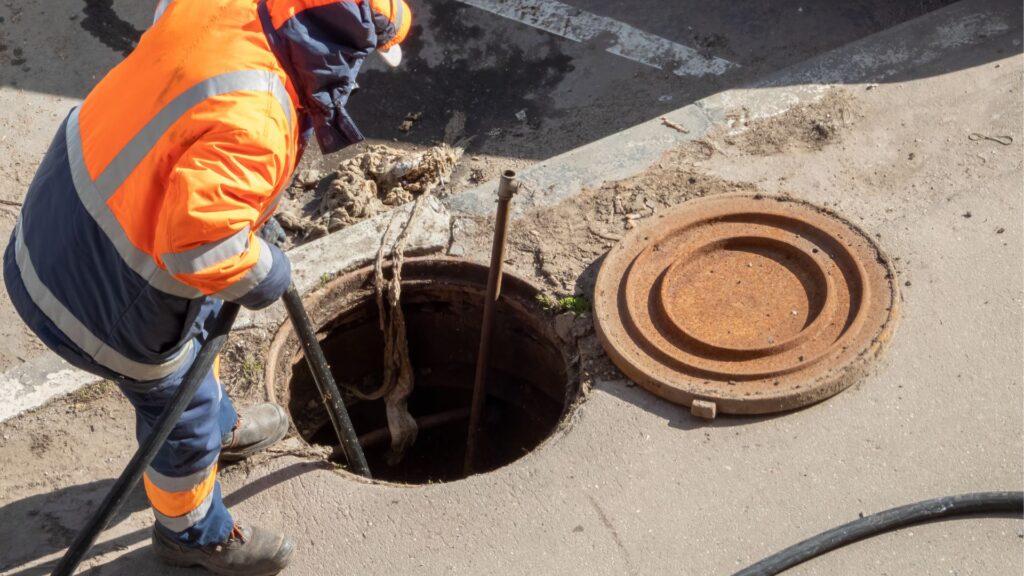
Innovations And Future Trends In NZ’s Sewerage Systems
As New Zealand looks toward the future, the sustainability and efficiency of its sewerage systems are increasingly in the spotlight. With growing environmental concerns and a commitment to maintaining clean waterways, innovative solutions are being developed to modernize the country’s sewerage infrastructure. These advancements focus on reducing the environmental footprint of waste management while enhancing the overall reliability of the system.
Sustainability in Focus
One of the key trends shaping the future of sewerage systems in New Zealand is the push toward sustainability. Traditional sewage treatment methods often require significant energy and resources, which can have a long-term environmental impact. To address this, new technologies are being introduced to make waste treatment processes more eco-friendly.
For example, many treatment plants are now utilizing anaerobic digestion, a process that breaks down organic waste without the need for oxygen, producing biogas in the process. This biogas can then be used to generate energy, creating a more sustainable, closed-loop system. Additionally, water recycling technologies are gaining traction, allowing treated wastewater to be reused in agricultural irrigation, industrial processes, and even for replenishing natural ecosystems. These innovations help reduce the strain on freshwater resources while promoting a circular economy approach to water usage.
Further improvements in smart sewerage systems are also being explored. By integrating sensors and automation into the infrastructure, councils can monitor the health of sewerage systems in real time. These smart systems detect blockages, leaks, and other issues before they escalate, helping to prevent costly repairs and environmental damage. The integration of AI and machine learning also allows for predictive maintenance, which can extend the lifespan of sewerage networks.
Government Initiatives
The New Zealand government is playing a crucial role in shaping the future of the country’s sewerage infrastructure. Various national and regional initiatives are being implemented to ensure that sewerage systems are resilient, efficient, and environmentally sound.
One notable example is the Three Waters Reform Programme, which is focused on improving water supply, stormwater, and wastewater services across the country. This initiative aims to standardize sewerage infrastructure management, ensuring that all communities, regardless of size or location, have access to safe and reliable wastewater treatment. By consolidating services and resources, the government hopes to deliver more consistent and higher-quality sewerage systems nationwide.
Additionally, there is growing support for green infrastructure projects that incorporate natural landscapes into urban planning. For instance, the use of constructed wetlands to filter and treat stormwater runoff is becoming more common. These wetlands not only help manage stormwater but also provide habitats for wildlife and green spaces for communities.
The government is also actively working to reduce nitrogen and phosphorus pollution in waterways, which can be exacerbated by inefficient sewage treatment. Stricter regulations and more advanced treatment processes are being enforced to limit nutrient runoff, which has a positive impact on New Zealand’s rivers, lakes, and coastal waters.
Public Involvement
While government initiatives and technological advancements are important, public involvement plays a crucial role in shaping the future of sewerage systems. New Zealanders can stay informed and engaged in several ways.
Local councils often host public consultations and workshops where residents can learn about upcoming projects and offer input on proposed changes to sewerage infrastructure. These consultations are an excellent opportunity for the public to voice their concerns, suggest improvements, and gain a deeper understanding of how these systems impact their everyday lives.
In addition to local meetings, many councils provide online resources and newsletters that offer updates on sewerage projects, waste management tips, and information on how to reduce household impact on the sewerage system. By staying informed, residents can make small changes at home, such as reducing water consumption and properly disposing of waste, which can collectively have a big impact on the sewerage system.
Furthermore, many New Zealanders are becoming involved in community-led environmental initiatives aimed at protecting local waterways. These initiatives often work in tandem with government projects to raise awareness about the importance of well-maintained sewerage systems and to promote sustainable waste management practices.
The future of New Zealand’s sewerage systems is bright, with innovations focused on sustainability, government initiatives aiming to modernize infrastructure, and an engaged public working to shape a cleaner, more efficient future. By embracing new technologies and staying actively involved, New Zealand can continue to lead the way in creating sewerage systems that not only manage waste effectively but also protect the environment for generations to come.
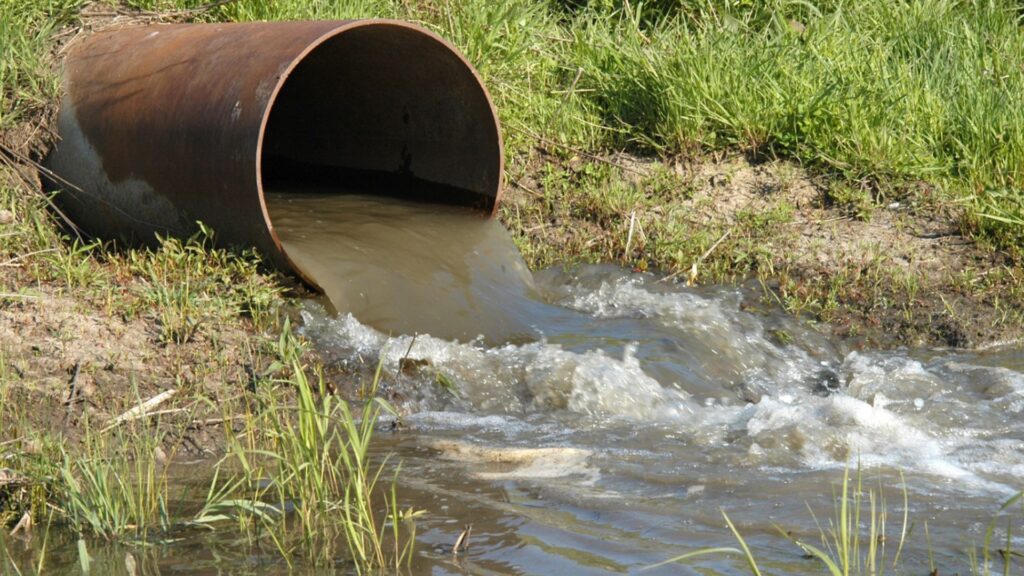
FAQs: About Difference Between Sewage Vs Sewerage NZ
Conclusion
In conclusion, understanding the distinction between sewage and sewerage is crucial for anyone wanting to grasp how waste management works in New Zealand. Sewage refers to the waste itself, including water from our homes and businesses, while sewerage is the network of pipes and treatment systems that transport and treat this waste. By recognizing the difference, we can better appreciate the infrastructure that supports our communities and contributes to public health. It’s important to be mindful of what we put down our drains, as our individual actions directly impact the efficiency of the sewerage system. By adhering to local guidelines and supporting efforts to improve this infrastructure, we contribute to a cleaner, healthier environment for everyone. A well-maintained sewage and sewerage system isn’t just a matter of convenience—it’s essential for protecting our natural resources and ensuring the long-term sustainability of our cities and towns.
Find A Professional Drainlaying Company Near You!
- Drain Layers Auckland
- Drain Layers Hastings
- Drain Layers Hawkes Bay
- Drain Layers Kapiti Coast
- Drain Layers Lower Hutt
- Drain Layers Napier
- Drain Layers Porirua
- Drain Layers Rotorua
- Drain Layers Tauranga
- Drain Layers Upper Hutt
- Drain Layers Wellington
- Drain Repairs Auckland
- Drain Repairs Wellington
- Drain Unblockers Auckland
- Drain Unblockers East Auckland
- Drain Unblockers Lower Hutt
- Drain Unblockers North Shore
- Drain Unblockers South Auckland
- Drain Unblockers Upper Hutt
- Drain Unblockers Wellington
- Drain Unblockers West Auckland
- Water Leak Detection Auckland
- Water Leak Detection Lower Hutt
- Water Leak Detection Upper Hutt
- Water Leak Detection Wellington
About the Author:
Mike Veail is a recognized digital marketing expert with over 6 years of experience in helping tradespeople and small businesses thrive online. A former quantity surveyor, Mike combines deep industry knowledge with hands-on expertise in SEO and Google Ads. His marketing strategies are tailored to the specific needs of the trades sector, helping businesses increase visibility and generate more leads through proven, ethical methods.
Mike has successfully partnered with numerous companies, establishing a track record of delivering measurable results. His work has been featured across various platforms that showcase his expertise in lead generation and online marketing for the trades sector.
Learn more about Mike's experience and services at https://theleadguy.online or follow him on social media:


